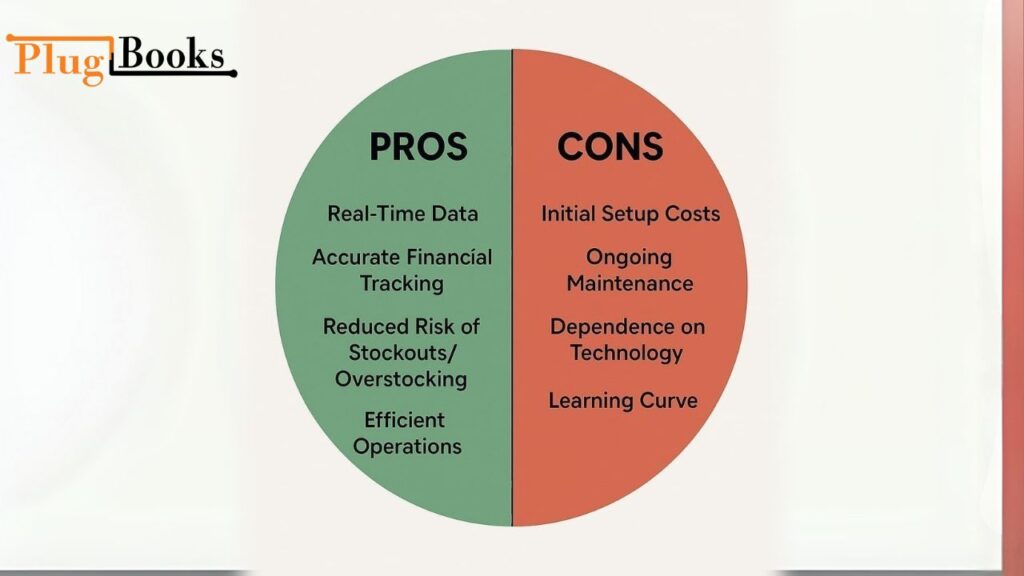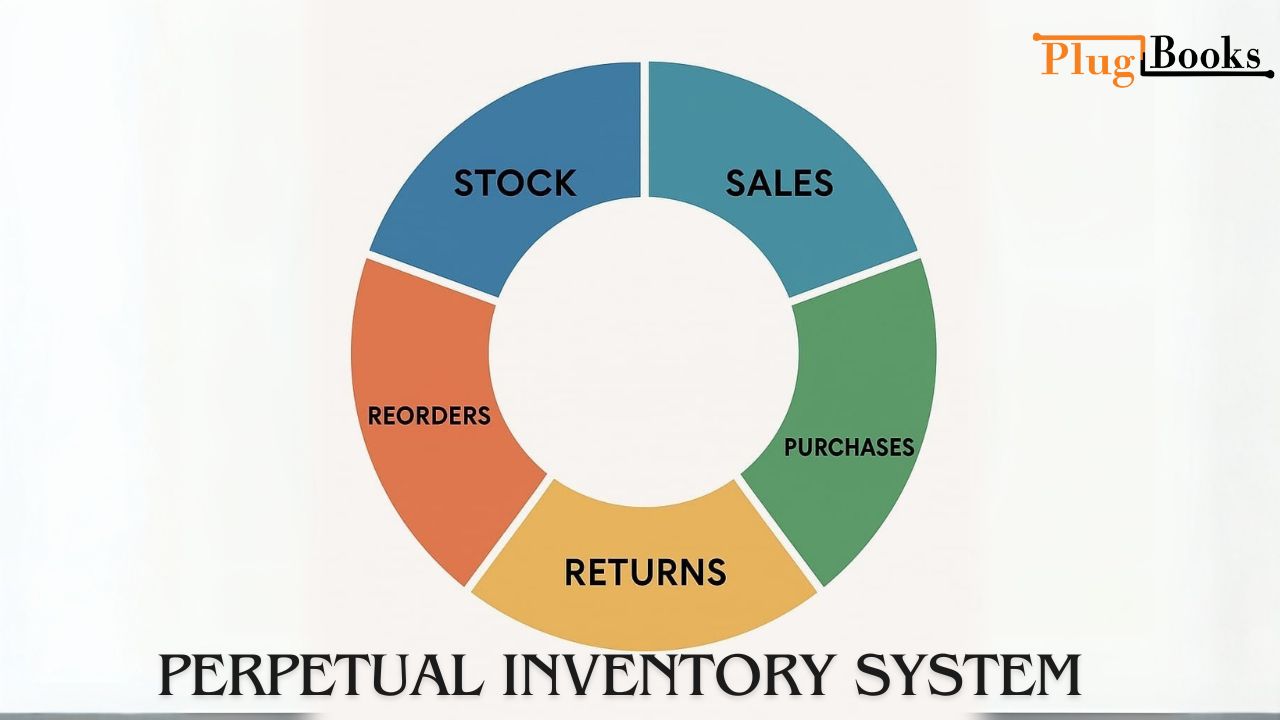Any size company can find managing inventories difficult. Unlike conventional approaches depending on regular counts, a perpetual inventory system presents a contemporary alternative by instantly updating stock levels. This technology logs every buy and sale right away, giving companies precise, current inventory data.
By means of connectivity with POS systems, businesses may continuously monitor inventory, therefore enhancing accuracy and efficiency. Let’s investigate the reasons behind companies choosing perpetual inventory systems instead of others.
Keynotes
- Real-Time Updates: Keeps inventory levels accurate with continuous tracking.
- Better Decision-Making: Provides up-to-date data for smarter restocking.
- Cost Efficiency: Saves on labor costs and reduces stock-related errors.
- Improved Cash Flow: Prevents over-purchasing and better allocates capital.
- Enhanced Customer Satisfaction: Ensures reliable order fulfillment and boosts customer loyalty.
How Does a Perpetual Inventory System Work?
The automatic inventory level updating mechanism of it depends on advanced software. Every time something is sold or refilled, the system notes the transaction in real time. Here’s a closer examination of how it operates:
- Real-Time Tracking: The mechanism instantly lowers the number of sold goods during a sale. In the same vein, the system adjusts the quantity to represent the fresh inventory as it is replaced.
- Integration with Point of Sale (POS) Systems: Most companies match their perpetual inventory systems with Point of Sale (POS) systems to guarantee flawless data synchronizing. This lowers human mistakes and offers an always more precise view of inventories.
- Continuous Monitoring: With every transaction, your stock levels are updated, so you’re always aware of what’s on hand. This is especially important for businesses under it, where precise tracking is crucial for maintaining operational efficiency.
Benefits of a Perpetual Inventory System
Using it offers companies numerous important benefits.
- Improved Accuracy: Real-time updates guarantee that your inventory is always accurate, so minimizing mistakes from hand stock taking and preventing stock outs or overstocking, thus influencing sales and costs.
- Enhanced Decision-Making: With up-to–date stock data, companies can swiftly make decisions—that is, whether it comes to managing slow-moving inventory or choosing popular items to replenish. This facilitates matching of supply to consumer demand.
- Reduced Labor Costs: Automating inventory tracking helps to decrease the necessity for regular physical counts, therefore reducing time and labor costs. By guaranteeing more precise data and hence minimizing expensive mistakes, this automation also helps to lower human errors.
- Better Cash Flow Management: Real-time inventory tracking helps companies to better allocate money by preventing over-buying. It guarantees that you are only making investments in stock required, therefore releasing funds for other areas of the company.
- Improved Customer Satisfaction: Accurate, real-time inventory data helps you more consistently fulfill customer orders and hence build customer trust and loyalty.
- Scalability: As your company expands, the under a perpetual inventory system scales with it and offers ongoing insights into inventory levels, therefore enabling you to handle higher volumes of stock without sacrificing accuracy or efficiency.

Pros and Cons of a Perpetual Inventory System
Pros:
- Real-Time Data: Continuous updates guarantee that you always know of stock levels, therefore facilitating the planning of restocks and order fulfillment free from delay.
- Accurate Financial Tracking: Real-time inventory updates let financial reports show current stock, therefore enhancing budgeting, forecasting, and financial decision-making.
- Reduced Risk of Stockouts and Overstocking: Real-time inventory visibility helps to preserve the proper balance, therefore preventing stockouts and overstocking—which can lower prices and boost earnings.
- Efficient Operations: Automation streamlines warehouse operations and increases general efficiency, therefore reducing the need for regular manual counts.
- Improved Customer Satisfaction: Maintaining current inventory levels helps you to satisfy customer requests quickly, improving the customer experience and reducing the missed sales.
Cons:
- Initial Setup Costs: Establishing it requires a large investment in software, hardware, and POS integration—all of which could be difficult for small companies.
- Ongoing Maintenance: Continuous maintenance of systems and software updates helps to guarantee seamless functioning. Technical problems including faults or bugs could call for expensive assistance.
- Dependency on Technology: Backup mechanisms and staff training are absolutely vital for a system depending on technology since it may suffer disruptions such data breaches, system failures, or power outages.
- Learning Curve: Particularly for companies just starting with inventory control, there is a sharp learning curve. Effective system use and avoidance of operational glitches depend on staff training.
- Complexity for Smaller enterprises: Comparatively to simpler, periodic solutions, the complexity and cost of a perpetual system could not be justified for small enterprises with low transaction volume.

Perpetual vs. Periodic Inventory System: What’s the Difference?
Some companies still utilize the periodic inventory system even if the perpetual inventory system is quite effective. The two look like this:
- System of Permanent Inventory: updated in real time with constant tracking. Ideal for companies with heavy transaction volumes or those always needing exact stock data.
- The periodic inventory system updates inventory on weekly, monthly intervals. Though less precise and lacking up-to-current information, this approach can be simpler and less expensive.
Smaller organizations with less frequent inventory movement may find the periodic approach more appropriate; the under a perpetual inventory system is usually more suited for companies aiming for accuracy and efficiency.
Why Your Business Needs a Perpetual Inventory System
Accuracy and efficiency are absolutely essential in the hectic corporate scene of today. A perpetual inventory system is therefore absolutely necessary for the following:
- Real-time inventory tracking becomes essential as your company expands to easily manage higher stock levels.
- Real-time tracking guarantees products are always available, therefore lowering stockouts and increasing customer confidence by means of constant availability.
- Constant updates enable early detection of differences or theft, therefore minimizing stock loss and safeguarding of profits.
Why PlugBooks is Perfect for eCommerce Sellers
PlugBooks is an eCommerce accounting software that helps Amazon and eBay sellers manage inventory and finances. It automatically integrates with QuickBooks and Xero, ensuring accurate, real-time financial tracking and streamlining operations. Perfect for sellers of all sizes, PlugBooks makes accounting easy and efficient.
Conclusion:
For companies aiming to maximize inventory control, it ensures accurate stock levels with real-time tracking. What is perpetual inventory system? It’s a system that updates inventory continuously, simplifying processes and boosting your bottom line, whether you run a large warehouse or a small store.
Ready to start? See how it can help your business at PlugBooks.io!




